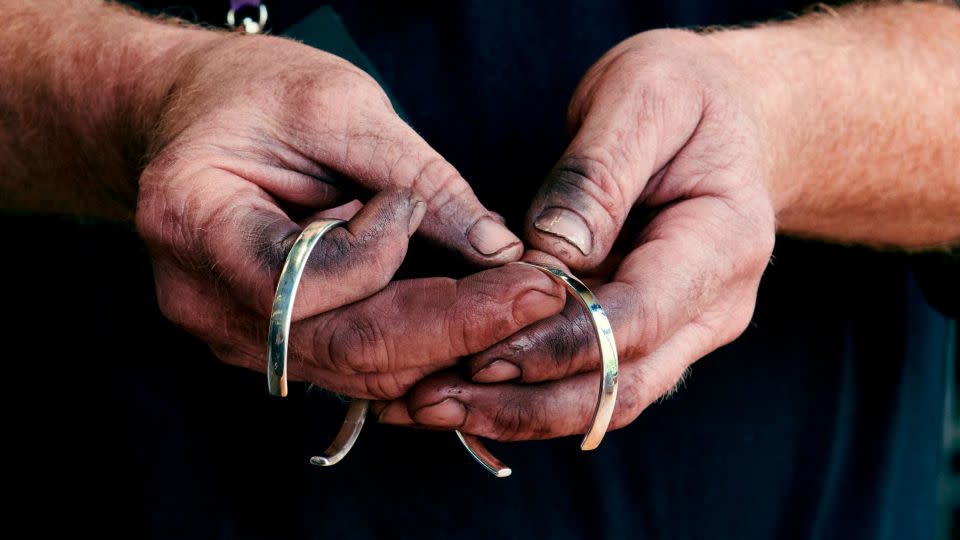Britain’s official coinmaker is recovering silver from X-ray film and turning it into jewelry
Editor’s Note: Call to Earth is a CNN editorial series committed to reporting on the environmental challenges facing our planet, together with the solutions. Rolex’s Perpetual Planet initiative has partnered with CNN to drive awareness and education around key sustainability issues and to inspire positive action.
Looking at an X-ray film you might spot fractured bones or even floating foreign objects — but hidden within the film itself there is a tiny amount of silver. Now, The Royal Mint, the UK’s oldest company and official maker of British coins, is using that silver to create jewelry.
To source the silver, it has teamed up with Betts Metals, a company based in Birmingham, England, that has recovered precious metals from waste for more than 250 years.
Betts collects used X-ray film that is no longer needed by hospitals and is otherwise destined for landfill or incineration, explained Charlie Betts, the company’s managing director.
The film goes through a machine that chops it into small pieces, before chemical processing is used to separate the silver. It’s then smelted and transferred to another site, where it is refined to 99.9% purity, just like any other source of fine silver.
Hospitals receive the monetary value of the reclaimed silver. Betts notes that the amount of silver can vary greatly between X-ray films and many tons of film are needed to make its recovery cost effective.

Good as gold
The X-ray silver recovered by Betts is being used by other jewelers, including London-based Angharad, but the Royal Mint also extracts gold from electronic waste. It uses “world-first chemistry” from Canadian company Excir, which it says is able to recover more than 99% of precious metals within minutes from electronic waste (known as e-waste) such as laptop circuit boards and mobile phones.
Each year, more than 50 million metric tons of e-waste is produced globally. Less than 20% is recycled worldwide, resulting in precious metals valued at $57 billion being thrown away or forgotten about instead of reused. Some of that goes to landfill, and can end up contaminating the soil and leaching into groundwater; much is recycled informally in developing countries, where workers can be exposed to toxic metals. Mining for new precious metals can also contaminate water sources, as well as scar pristine landscapes.
This year, The Royal Mint is set to open a new Precious Metals Recovery plant that will be capable of processing 4,000 metric tons of the UK’s e-waste each year, according to Sean Millard, The Royal Mint’s chief growth officer.
“Our X-ray silver and e-waste gold projects provide a source of provenance for our precious metals,” said Millard. “[They] are an important step in reducing The Royal Mint’s reliance on mined materials.”
Wearing waste
The X-ray silver and e-waste gold are used in The Royal Mint’s 886 jewelry collection, and perform exactly the same as metals that are mined, according to Dominic Jones, creative director for 886.
For Jones, it’s not just about recycling — it’s about preserving precious metals that have already been mined. He says 7% of the world’s entire gold reserve is stored in the form of broken laptops and old cell phones.
“The idea that this material is there unused, when we are still pulling up new materials, doesn’t sit well with me,” Jones said. “X-ray silver is exactly the same: this is a previously unused source of silver that has been lying dormant until now.”
In the future, The Royal Mint aims to have all its jewelry made from sustainable sources with provenance.
Jones says he wants his pieces to last generations, and not only be a beautiful piece of design but an example of cutting-edge sustainability that uses materials that are progressive and not damaging to the environment.
“These pieces are timeless by intent, antiques of the future,” said Jones. “It’s a win-win.”
For more CNN news and newsletters create an account at CNN.com

